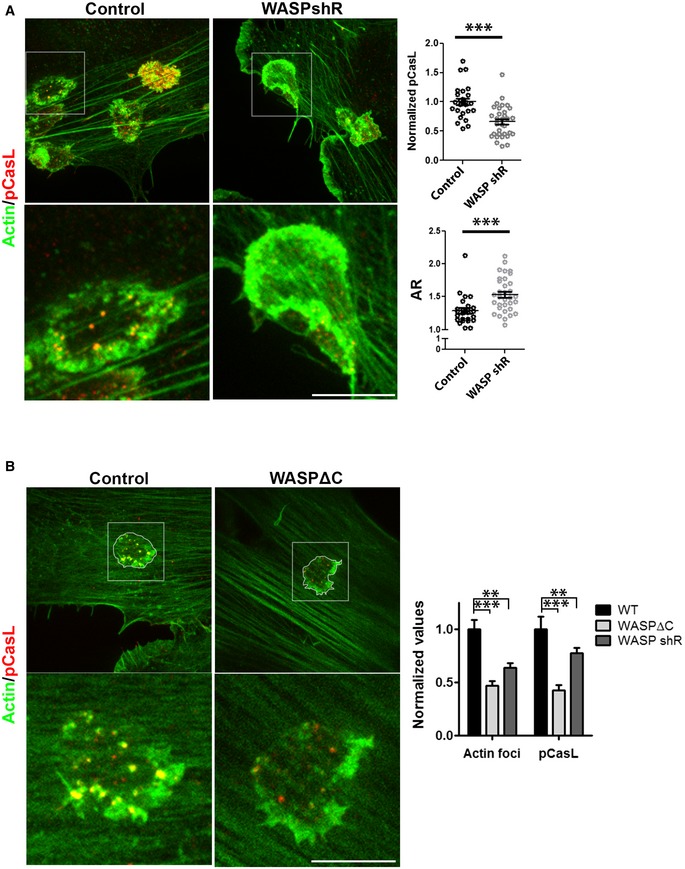Foci polymerization role of WASP underlies its mechanical tension‐generating activity. Human CD4
+ T cells were transfected with human WT WASP‐GFP, WASPΔC, or WASP shRNA (shR)‐transducing lentiviral particles. Note that WASP shR and WASPΔC overexpression reduces foci and pCasL at the synapse to a similar extent. The foci values in the graph include background contribution by APC cytoskeletal features underneath the synapse, which are quantified along with foci by our foci extraction algorithm outlined in Fig
EV1. The bars in the graph show the mean values normalized to the mean of “WT” in each case.
P values,
P*** and ** for foci are 0.0003 and 0.004, respectively, and
P** and *** for pCasL are 0.005 and 0.0004, respectively, measured using Mann–Whitney test. Scale bars, 5 μm.

